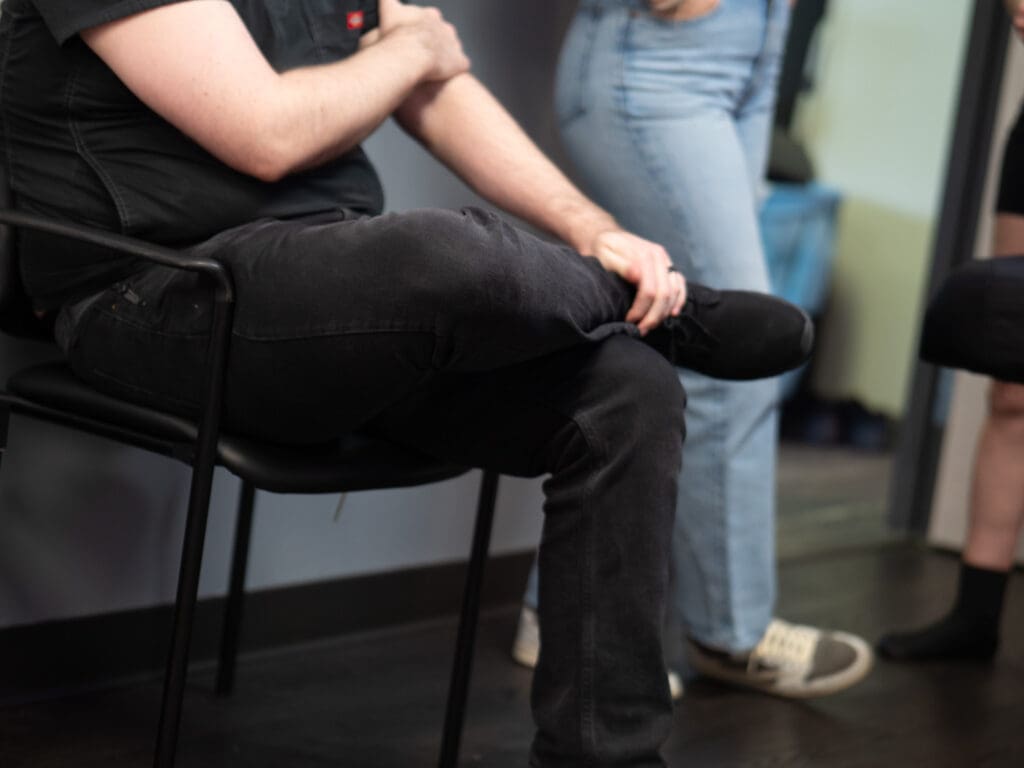Pickle ball is an exciting and rapidly growing sport enjoyed by people of all ages. However, like any physical activity, it comes with the risk of injuries, particularly ankle sprains. Understanding how to prevent ankle sprains can help you stay on the court and enjoy the game without interruption. At TRACE Body Rejuvenation in Houston, we specialize in combining TECAR therapy with manual therapy techniques to help resolve common pickle ball injuries and expedite recovery.
Ankle sprains are one of the most common pickle ball injuries due to the quick lateral movements and sudden changes in direction required by the game. These movements can put significant strain on the ankle ligaments, leading to overstretching or tearing. Factors such as improper footwear, lack of warm-up, and poor court conditions can increase the risk of ankle sprains.
Symptoms of an ankle sprain, a frequent pickle ball injury, can include pain, swelling, bruising, and difficulty walking or bearing weight on the affected foot. Severe sprains may also cause instability in the ankle joint, making it more prone to future injuries.
Proper Footwear: Wearing appropriate footwear is crucial in preventing ankle sprains, one of the most common pickle ball injuries. Choose shoes specifically designed for court sports, as they provide better support and stability. Look for features like non-slip soles, ankle support, and cushioning to absorb impact.
Supportive Shoes: Ensure your shoes fit well and provide adequate support around the ankles. Avoid worn-out shoes, as they may not offer the necessary protection
Shoe Inserts: Consider using orthotic inserts to enhance support and alignment, especially if you have a history of ankle injuries or foot issues.
Warm-Up and Stretching: Warming up before playing pickle ball prepares your muscles and joints for the physical activity, reducing the risk of injuries.
Dynamic Warm-Up: Engage in a dynamic warm-up routine that includes light jogging, high knees, and butt kicks to increase blood flow and flexibility.
Ankle Stretching: Incorporate ankle stretches to improve flexibility and strength. Exercises like ankle circles, toe raises, and resistance band stretches can be beneficial.
Strengthening Exercises: Strengthening the muscles around your ankles can provide better support and reduce the risk of sprains.
Balance Training: Incorporate balance exercises such as standing on one leg or using a balance board to improve ankle stability.
Strengthening Drills: Perform ankle strengthening drills like calf raises, toe walks, and heel walks to build muscle strength and endurance.

TECAR (Transfer of Energy to Capacitive and Resistive tissues) therapy is an advanced treatment that uses radio frequency energy to stimulate tissue repair, reduce pain, and decrease inflammation. This non-invasive technique enhances blood flow and accelerates the healing process, making it an excellent option for treating ankle sprains.
Enhanced Healing: TECAR therapy promotes faster healing by increasing blood circulation and stimulating cell regeneration in the affected area.
Pain Relief: The therapy helps reduce pain and inflammation, allowing you to return to activity more quickly and comfortably.
Combining TECAR therapy with manual therapy techniques provides comprehensive treatment for ankle sprains. Manual therapy includes techniques such as massage, mobilization, and stretching to improve flexibility, restore-range of motion, and reduce muscle tension
Massage: Massage therapy helps reduce muscle tension and improve blood flow to the injured area, aiding in recovery.
Mobilization: Joint mobilization techniques can restore normal movement and function to the ankle joint, preventing stiffness and enhancing recovery.
Stretching: Regular stretching exercises can improve flexibility and prevent future injuries by maintaining the range of motion in the ankle joint.
Strengthening: Vital to future injury prevention is strength and stabilization of that joint. Exercises specific to foot and ankle health is important.
At TRACE Body Rejuvenation, we create personalized treatment plans tailored to each patient's specific needs. Our approach combines TECAR therapy with various manual therapy techniques to optimize recovery. Our skilled therapists work closely with patients to ensure they receive the best possible care, helping them return to the court stronger and more resilient.
Every patient undergoes a thorough assessment to determine the extent of their injury and identify the best course of treatment. Our therapists consider factors such as the severity of the sprain, the patient's overall health, and their goals for recovery.
We provide continuous support and make necessary adjustments to the treatment plan based on the patient's progress. Regular follow-up appointments ensure that the therapy is effective and that the patient is on the right track to recovery.
If you're experiencing ankle pain or have suffered an ankle sprain while playing pickleball, schedule a consultation at TRACE Body Rejuvenation in Houston. Our expert team will help you explore the latest techniques in treating ankle sprains and find the best option for your needs. With our personalized approach and advanced therapies, you can achieve faster and more effective recovery.